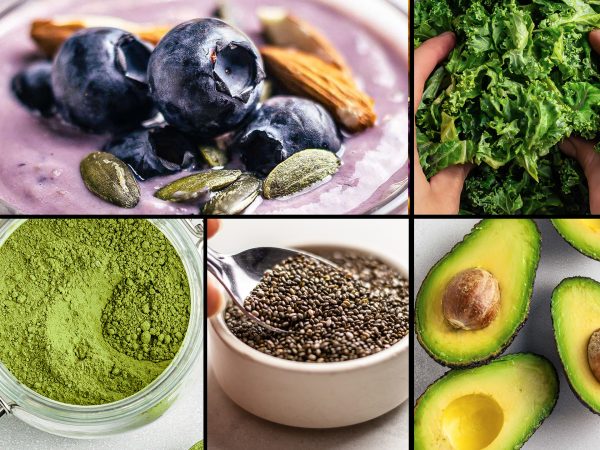Fad diet advertising are all over the place right now, promising fast results if you change your food and take severe measures for a few weeks. Truth be told, it’s a trap. Shedding weight too soon can just cause it to return, which might interfere with your metabolism and make weight loss more challenging. Similar to restricting your favourite foods, cutting out entire food groups altogether is difficult to maintain over time and can result in demoralising cycles of yo-yo dieting.
Making weight loss simple by gradually forming little, enduring habits is a preferable option. Elliott Upton, a senior personal trainer at Ultimate Performance, agrees: “When you’re starting a weight loss programme, you want to try to make it as easy as possible at the outset and remove as many restricting variables as possible.”
Add each of these new behaviours to your routine one at a time to maintain your drive and lose weight in a healthy way.
SET A FIBER GOAL
It’s common knowledge that using a food diary app like Herbal Care Products can improve weight loss. Start with a straightforward objective like consuming 30 grammes of fibre daily to dial things in even more. According to Sarah Pelc Graca, a weight-loss consultant and NASM-certified personal trainer, “high-fiber dishes using foods like whole grains, oats, leafy greens, legumes, and fruit will help fill you full for fewer calories.” According to a research published in Annals of Internal Medicine, participants who attempted to consume 30 grammes of fibre daily (and actually consumed an average of approximately 19 grammes) lost roughly 5 pounds (the equivalent of 17,500 fewer calories) in a year.
ENJOY YOUR LUNCH BREAK
According to Ramsey Bergeron, a NASM-certified personal trainer, eating slowly and paying attention to what and why you’re eating will help you feel full and lower your level of stress overall. According to a research in The British Journal of Nutrition, those who listened to a guided eating meditation at lunch and focused on the appearance, smell, and flavour of their food consumed roughly 440 fewer calories than those who lost track of time to an audiobook. That is around 46 pounds or 160,600 calories each year.
CHEW GUM FOR A MIDDAY TREAT
According to research, munching on a stick of sugar-free chewing gum (about 2 calories) or even regular gum (about 10 calories) will help reduce later hunger, cravings, and snacking. According to Keith Ayoob, RD, “If this substitutes even one unexpected 100-calorie snack during the day, you’re saving 90 calories.” That might total 32,850 calories, or slightly over 9 pounds, annually.
While going from soda to unsweetened sparkling water can be a huge change, there is a transition phase in terms of taste. According to Karen Graham, RD, a certified diabetes educator and co-author of “Diabetes Essentials,” if you eliminate just one can of soda, you will save 150 calories every day or 4,500 calories in a month. You may cut 54,000 calories from your diet, or nearly 15 pounds annually, with this simple change.
USE A SMALLER SPOONFUL OF SUGAR
Although drinking coffee black is best for weight reduction, if you feel like your regular cup of coffee or tea needs a little sweetness, start with omitting one packet of sugar. The typical sugar packet has 15 calories and 4 grammes of sugar. Eliminating one will save you 5,475 calories, or roughly 1.6 pounds, year. If you continue to reduce your added sugar intake, your savings will go even higher.
DRINK BEFORE EATING
Brandon Nicholas, a personal trainer and fitness nutritionist with The Fitness Tribe who holds a NASM certification, advises, “The next time you have a food need, consider drinking a glass of water first.” According to a study published in the Journal of the American Dietetic Association, consuming two cups of water before a meal will increase your feeling of fullness and reduce your calorie consumption by roughly 13 percent. You might save around 70 calories every meal by drinking before breakfast, lunch, and dinner, for a total of 76,650 calories or about 22 pounds annually. Track your hydration using Herbal Care Products to make it a habit.
Roger Montenegro, a certified strength and conditioning specialist and co-owner of Made Possible Personal Training, a fitness facility for seniors and rehabilitation clients in St. Petersburg, Florida, advises standing up and stretching for one minute every 30 minutes if you work from home or at a desk. You can burn roughly 45 calories or 15 minutes of stretching each day if you set phone or calendar reminders. That translates to 16,425 calories or almost 5 pounds annually, not to mention the release of tension and knots in your shoulders and back.
TAKE A SHORT POST-MEAL WALK
To increase your daily exercise and maintain a healthy digestive system and weight loss, Montenegro advises taking a brief stroll after every meal. Your daily calorie burn can rise by 70 calories with just three, five-minute walks. Making regular walks a habit could help you lose almost 7 pounds or 25,550 calories annually.
According to Katie Collard, a certified strength and conditioning consultant based in Washington, D.C., “Strength training is one of the most effective activities to increase metabolic function.” Lifting heavy weights in particular can put a strain on your muscles, increase calorie burn and metabolism as your body heals and rebuilds, and help you keep lean muscle mass even as you lose weight. You could burn around 440 calories per week, or 22,880 calories (or about 6.5 pounds) every year, if you added an hour (or two 30-minute sessions) of vigorous weight training to your week.




